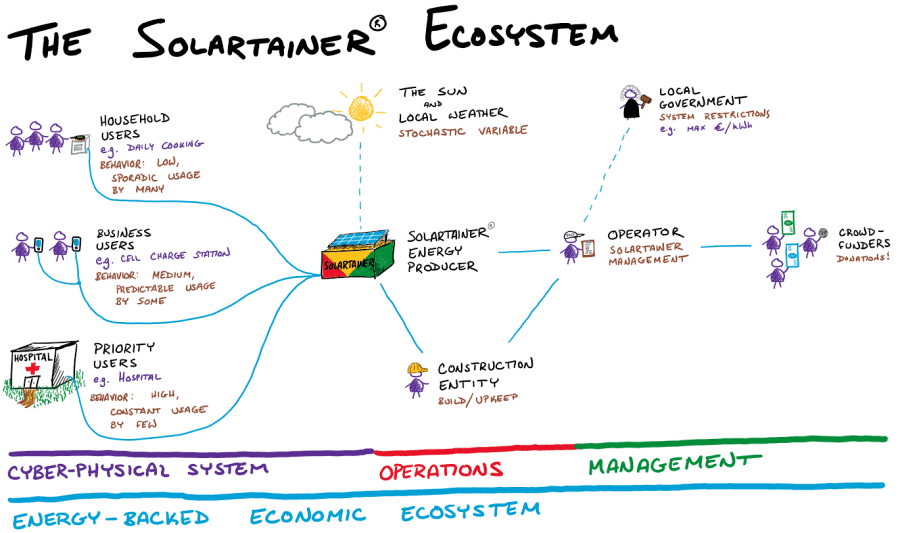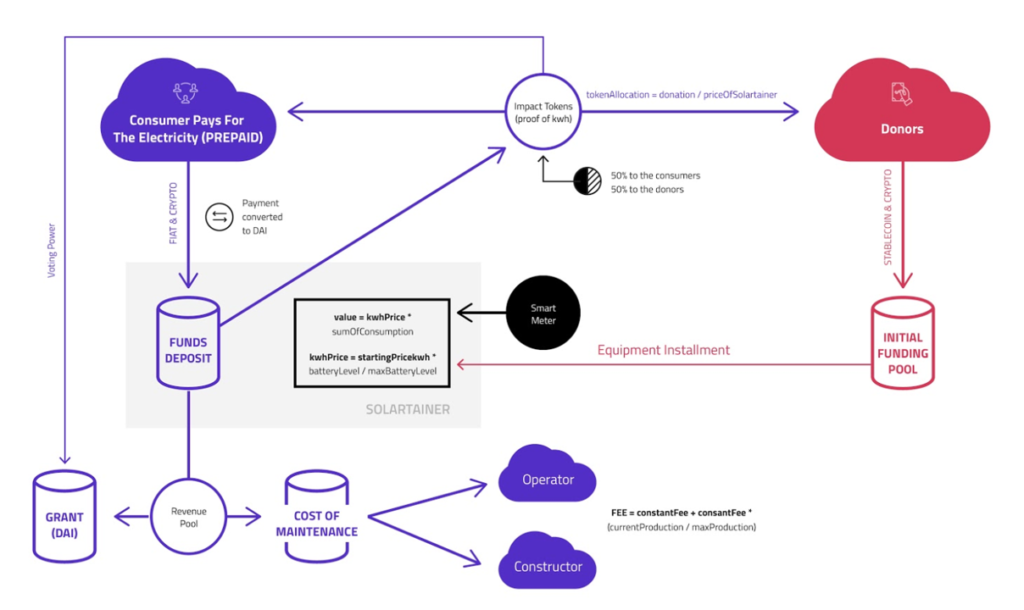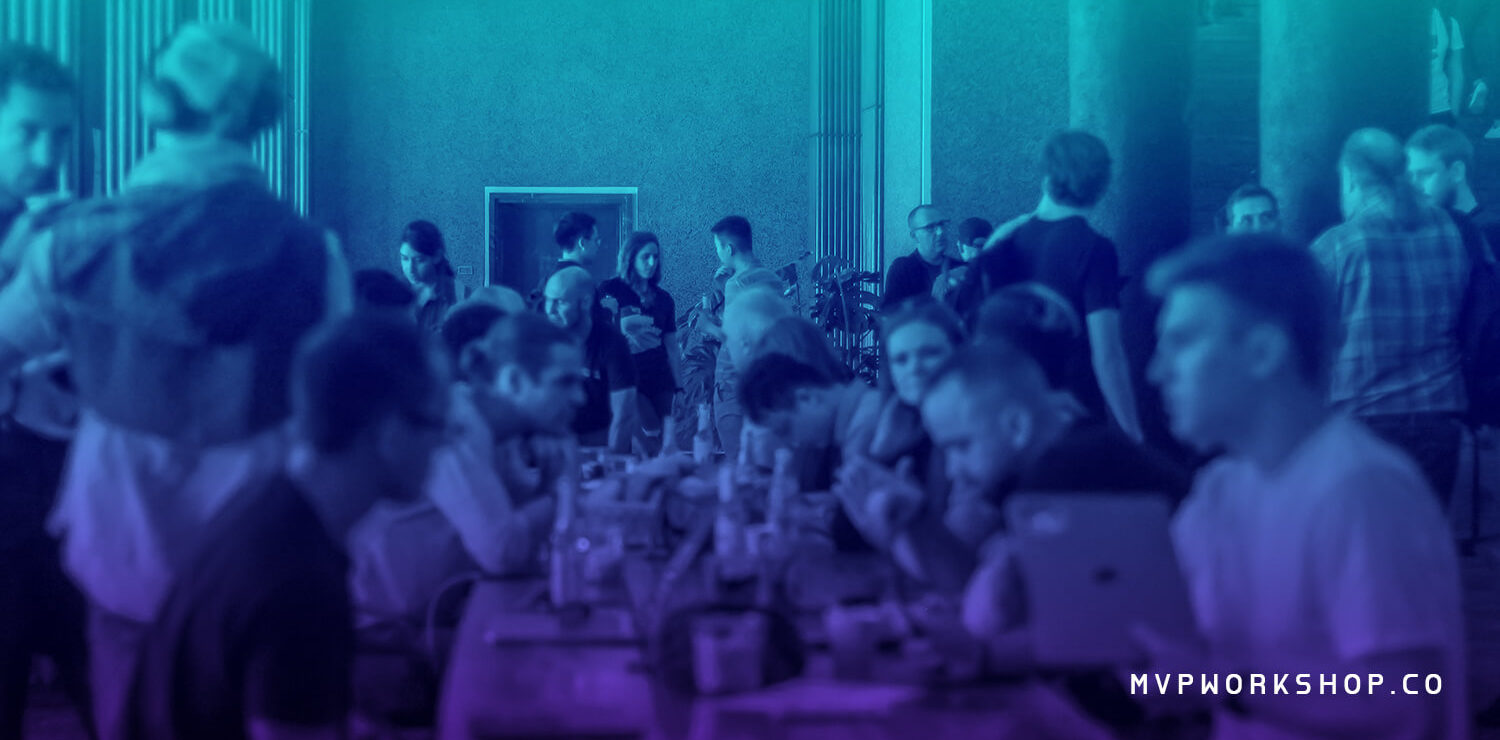MVP Workshop team participated in this year’s Diffusion Hackathon in Berlin, working on the Token Engineering Track. The case was given by Siemens – design a token economy around energy use and ownership of a newly installed smart solar microgrid to optimize energy production, value exchange, and positive impact to the community. A solution for the problem present across Africa, in this case the rise of digital economic activity in Senegal which is driving the need for access to affordable electricity.
The Team

Petar Atanasovski, Product Manager
Celsius Network, Swarm Fund, Cere Network
Focus – Product Discovery & Definition, UX
Hackathon role: Mentoring

Filip Petrović, Software Engineer
Swarm Fund
Focus – Smart Contracts, Dapps, Back-end
Hackathon role: Smart Contracts

Miloš Novitović, Product Manager
Swarm Fund
Focus – Security Token Offering, UX
Hackathon role: Token Modelling

Milan Pajović, Software Engineer
Celsius Network Services & Integration
Focus – Vue.js, nodejs
Hackathon role: Backend
Diffusion Hackathon
There were 10 different tracks to choose from during the hackathon, and our team has opted to go with “Token Engineering: (re-)invent economic mechanisms by using simulations” – this was the first time a dedicated token engineering track was present on a hackathon, and we really wanted to put our previous experience to the test.
The Case
Started in 2016 with a vision that Electrification, Digitalization, and Automation can and must have a positive impact on people’s lives, Siemens’ Connect2Evolve is driven by an unstoppable curiosity about how tokenization and new forms of the decentralized organization play a role. Together with their network, they are now planning a crowdfunding campaign to donate a Solartainer® to power a village in Senegal.
The Solartainer® is a self-contained solar smart micro-grid, including solar panels, storage, satellite internet, and grid cabling. It is capable of bringing electricity, information, and financial services to off-grid rural villages with a population of 4,000 people.
Our Solution
Our guiding principle in architecting the solution was to maximize the utilization of the microgrid infrastructure.

These are the challenges we aimed to solve during the hackathon:
- System transparency for all system stakeholders
- Maximizing the usage of the container capacity
- Transferring the fractional ownership of the container
- Incentivizing education and training that leads to global development
We came up with the token model that enables the flow of value created through energy consumption (information, energy, money) to maximize the usage of the container(s) – starting with the container donors/investors. Each container is practically a small-scale STO, where each donor gets the appropriate amount of Impact Tokens based on the individual donation value versus the sum of all donations – the price of the Solartainer®. This provides the donor with a transparent overview of the impact his donation is making during the life cycle of the deployed micro-grid. Once the container is installed and is producing electrical energy the community will be able to use the benefits of such a grid and start purchasing electricity.
Users can prepay for electricity usage by using FIAT or crypto, and the paid amount will be converted into DAI and saved as Deposited Funds.

The amount of electricity used by a specific community member is tracked by the Smart Meter that is a part of the network set-up. The data is automatically sent to the Solartainer® and two actions are performed:
- Based on the price and amount of kWh used (price dependent on supply/demand of electricity) adequate amount of Deposited Funds (DAI) will be transferred to the Revenue pool.
- Based on the kWh spent, Impact Token will be minted.
When the funds are transferred to the Revenue pool, they are being allocated to the Grant Pool and shared between the Contractor and Operator.
While electrical energy is used and DAI tokens transferred to the Revenue Pool, a new phase of minting the Impact Token will be happening. Based on the Smart Minter data and kWh that are spent, Impact tokens will be minted and distributed to the users and donators (1 kWh = 1 Impact Token/IT). The user that spends the electricity will receive half of the IT tokens that are minted based on his spending, while other tokens will be distributed to the donors, based on the amount of their donation.
In this way, the donor will be aware of the impact his donation is making, and will receive a right to take part in a voting system that decides how the Grant Pool will be used. User, as a member of the community which should take all benefits from the Solartainer, is receiving the tokens at the same time, giving him a right to vote as well.
How the Grant Pool will be spent – education and training of the community members, purchasing additional equipment, etc – is something that anyone can suggest. By creating this kind of Impact Token fractional ownership of the container will be transferred to the community over time.
We went a step further and worked on the smart contracts to support this model.
Under The Hood
One of the key tools we used is the Token Modelling Canvas, which is extremely useful for designing the tokenomics of the project – defining the token value and mapping the whole ecosystem of stakeholders around it. As we like to share the things we do, you can get the Token Modelling Canvas right here.
We started building our platform using the Token Modelling Canvas in order to properly define all key system elements. After mapping everything we started designing the token model – making assumptions based on experience and research, about how the model should function and incentivize all stakeholders. Many ideas came to mind and we went for slightly modified Burn & Mint Equilibrium. The token that is handling the token price based on supply and demand curve is generated internally, inside the Solartainer® and only distributed to users that are inside the system. In order to test our assumptions and our idea how that token economy would work, we made cadCAD simulations, putting to test certain situations and confirming our model will work as desired. It probably needed more testing in order to be optimal but, due to time constraints, this approach would work as intended.
One of the bigger challenges we ran into was – how to incentivize the different stakeholders in the system, with all the varying needs? Ones having to receive a token for the service that they are providing to the ecosystem (Constructors & Operators), others willing to pay for the electricity using both crypto and FIAT, and the donors who just want to have a transparent way to see their donations’ impact and make sure that they ended up in the right place.
At the end we are proud that we designed a system that allows:
- Investors to view the real impact their donation is making, while also allowing them to take part in a voting system
- Users to buy electricity based on the real-time demand/supply and to decide how collected funds will be distributed (spent)
Product Development
Another challenge our team was facing at the Diffusion Hackathon was – how to use the product development practices from MVP Workshop in condensed form due to the time constraints of the hackathon? The teams’ proposed structure for tackling the non-technical part of product development during the competition looked like this:
1) Product Ideation – using the Decentralized Business Model Canvas (DBMC) to clearly define the business model, as well as User Personas as one of the key points for properly mapping the value streams between the systems’ stakeholders. This naturally translates into Jobs to be Done and User Stories which are crucial for properly balancing the system – because blockchain is not a solution but a technology stack, a tool for facilitating solutions. This means that the product or service our team will be developing needs to be viable from a business standpoint regardless of the technological implementation stack. We tackled this topic from a high-level perspective during our meetup in Berlin when we talked about blockchain product development and How to Facilitate Mass Adoption?
2) Product Research – the teams will need to make a lot of assumptions while developing their business models, and the focal point here is to test them out as much as possible. cadCAD will definitely make the whole process a lot easier, but initially our team will be using the extension of the DBMC before translating the assumptions into the system, formally characterized as a generalized differential equation or differential game.
As we already said, we love sharing – get the Decentralized Business Model Canvas (DBMC) and the Risky Assumptions analysis table.
3) Product Discovery – defining the User Flows, Low Fidelity design (primarily for the demo showcase) and Roadmap Planning, meaning clearly outlining the future development of the product and an understanding of how the product would be marketed.
4) Product Design – usually, this area would entail the Design Sprint 3.0 and User Testing, though because of the nature of the competition, the teams’ focus will primarily be on incorporating UI heuristics which help us tackle design challenges when developing blockchain products. Feel free to check out our blog post – 10 Usability Heuristics for UI Design in the Blockchain Era.
5) Product Development – technical implementation of the product. Since our team is still figuring out their approach, we will make sure to update you as they go, as well as compiling a comprehensive development report and product showcase after the hackathon.
In order to get a better overview of how we do product development @ MVP Workshop check out the case study from our work with Celsius Network.
Collaboration
We love spending time abroad together as a team, especially since we are now fully distributed and can operate as a unit anytime and anywhere! We also keep getting back to Berlin and since March this year, we have official company presence (not to say offices) here in Germany since the startup and blockchain scenes are so lively and innovative that this is definitely the place to be in Europe right now. MVP Workshop became an active contributor to the Berlin Blockchain Community, and as we speak we are in the process of getting official membership as well.
This Berlin trip has been productive – amazing hackathon experience and a week full of team collaboration with some of the in-house sessions between different product development teams working on PBIs. We took this opportunity to do some on-site sessions with two of our clients that are based in Berlin – Cere Network and Swarm.fund. There’s a bunch of interesting things happening with Cere which we will be talking about soon, and Swarm is joining forces with Siemens which is definitely the way to go towards mass adoption – so we are super happy and excited to be a part of such successful projects and have them both as our partners and clients. While you are here, feel free to check our Swarm Case Study as well and recent news about Swarm Capital.



